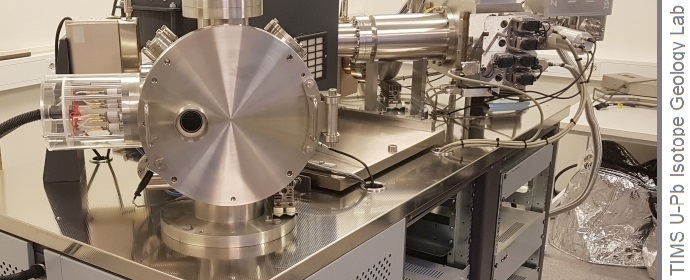The laboratories at 4D Space are developed and equipped to assemble, inspect, calibrate and test instruments. The main focus is space instrumentation, but other disciplines are of course possible.
Infrastructure - alphabetical list
An ancient DNA laboratory is situated on the Blindern Campus at the Department of Biosciences (IBV), University of Oslo.
The Aqueous Chemistry Lab is used for analysis of major and trace element compositions in natural waters and sediments. The lab provides data to research in environmental geosciences and for studies in disciplines related to pollution and environmental geosciences at the Dept. of Geosciences. It also has years of experience in providing analyses to a range of external clients.
The bioimpedance lab is equipped for impedance measurements in a broad frequency range, spanning from mHz to GHz. We study both linear and non-linear electrical properties. Furthermore, equipment for water sorption studies and near-infrared spectroscopy. We have expertise in electrode systems and measurements on humans, organs, cells, food, other biological tissues and inorganic materials.
The University of Oslo has a biological station in Drøbak that includes a research station (Biologen), established in 1894, and a lodging and conference centre (Tollboden), established in 1860.
The cell laboratory is completely equipped for culturing mammalian cells and has instruments for measuring and controlling the oxygen level in the cells' micro environment. Cell irradiation facilities include a 220 kV X-ray machine as well as a cell irradiation set-up and a cell laboratory in connection with Oslo Cyclotron Laboratory for proton irradiation.
Center for analysis of astrophysical data is an IT resource for the centre of excellence RoCS, EU-projects, NFR projects at Institute of Theoretical Astrophysics and a resource for scientists and students at the institute and international collaborators.
The CLIPT (CLimate Interpretation of Plant Tissue) lab measures carbon, nitrogen, oxygen and hydrogen stable isotopes on geological and biological substrates for the UiO community.
The Electron Microprobe Analyzer (EMPA) provides in-situ qualitative and quantitative chemical analysis of minerals and other solid materials at the micrometer scale. We have extensive experience in performing high-quality microanalyses for research and education at the Dept. of Geosciences, Material Sciences and other Institutes at UiO, for other Norwegian and Nordic research institutions as well as for industry clients.
The EM-lab at the Department of Biosciences is part of the core facility Life Science Electron Microscopy Consortium (LSEMC). The other LSEMC node, the Electron Microscopy Laboratory, is located at the Institute of Basic Medical Sciences.
Finse Alpine Research Center, located in the northwestern part of the Hardangervidda mountain plateau. Seminars and meetings, as well as university field courses, are regularly held in the conference unit.
The lab in Forskningsparken houses a JEOL JIB-4500, a dual-beam focused ion beam (FIB) that allows sample preparation and investigation. The system is equipped with a Kleindiek micro manipulator needle, as well as a Kleindiek two-point electrical characterization system. The system is often used in conjunction with TEM-lamella fabrication.
The function of the Hydrodynamic lab is to provide space, facilities, and equipment for physical, coastal and ocean research.
The Instrument Laboratory is a mechanical workshop that serve primarily the faculty of mathematics and natural sciences as a partner in developments and prototyping of new instruments for experimental sciences.
The InVivo facility is an approved establishment, and provides in vivo infrastructure for research.
The Department of Chemistry maintains and operates an advanced state-of-the-art NMR laboratory with a fleet of 8 instruments in the range from 200 MHz to 800 MHz.
The Norwegian Culture Collection of Algae, NORCCA, maintained and owned by the Norwegian Institute for Water Research (NIVA) and the University of Oslo (UiO), includes algal strains from the two institutes and the former Danish algal culture collection SCCAP.
NorFab provides access to state-of-the-art laboratories for Norwegian researchers, supporting and enabling research and innovation within micro- and nanotechnology.
The node at the University of Oslo hosts two Transmission Electron Microscopes (TEM) that are part of the NORTEM national infrastructure. The instruments are fully equipped for structural, compositional and optoelectrical characterization of materials. We additionally have holders and systems for performing experiments at high and low temperatures, in-situ electrical biasing, and for studying in-operando solid-gas reactions.
The Norwegian Sequencing Centre is a national technology core facility offering sequencing services on the HiSeq X, HiSeq 3000/4000, HiSeq 2500, NextSeq 500 & MiSeq instruments from Illumina, and also the Sequel from Pacific Biosciences.
In the Organic Geochemistry Lab we analyse organic components in oils and environmental samples. The lab has over the years served as a research laboratory for several masters and PhD students in petroleum and environmental geosciences. The lab does not offer analyses, but the lab's instruments may by appointment be used by students and academic staff under the supervison of the lab personell.
The Oslo Cyclotron Laboratory (OCL) houses the only accelerator in Norway for ionized atoms in basic research. The laboratory serves as an experimental center for various fields of research and applications. The main field of research is within nuclear physics and nuclear chemistry. In addition, isotopes are produced for nuclear medicine.
The Norwegian Molecular Imaging Consortium (NorMIC) core facility at the Institute of Biosciences (IBV) focuses on fluorescence imaging of live and fixed samples. The core facility can offer a selection of imaging techniques to strengthen and support the community of Life Science in Oslo and Norway.
Several marine instruments are used in the field both in teaching activities in physical oceanography in the Oslo-fjord and for research activities at Department of Geosciences, UiO. The main instrument is the CTD (conductivity-temperature-depth) permanently mounted onboard on one of the UiOs research vessels – F/F Trygve Braarud.
PoreLab is a Norwegian Center of Excellence created in 2017 and situated at the Norwegian University of Science and Technology (NTNU) in Trondheim, and the University of Oslo (UiO). It focuses on the physics of porous media using experimental, theoretical and computational methods.
The University of Oslo and the faculty of natural sciences has two research vessels in the Oslo Fjord, F/F Trygve Braarud (70') og F/F Bjørn Føyn (40').
The department hosts two scanning electron microscopes (SEM). One is a high-end variable pressure FEG-SEM with dual EDS and high-resolution EBSD and cathodoluminescence (CL) system, the other one a smaller, tabletop SEM that is quick to set up and easy to use. The electron microscopes are used by researchers and students from a range of fields: sedimentology, environmental, petroleum, isotope- and structural geology, petrology, mineralogy, and micro-paleontology.
Also called DroneLab@UiO, the Drone Infrastructure Lab is equipped with a variety of drone systems ranging from light to heavy with payloads and sensors suitable for acquiring data on relevant scientific processes. The lab is used in both research and teaching in the Department of Geosciences, and services are also provided to external clients. Since 2021, the lab serves as a core infrastructure for research at the Faculty of Mathematics and Natural Sciences.
The flow laboratory together with the friction and interface lab from the Dept. of Geosciences provides high quality of analysis for UiO researchers and external partners. The laboratory also provides teaching at the Dept. of physics. The laboratory is used in the physics department to analyze different types of samples ranging from monitoring crystal growth to the characterization of biological materials.
The Flow Rig Laboratory (in Norwegian; Strømningslaben) provides experiments on water flood, liquid-liquid and liquid-gas relative permeability in situ reservoir conditions in core samples. Since 2012, the The Flow Rig Laboratory has served as a research facility for PhD research fellows and scientists at the Dept. of Geosciences, UiO. The lab is also open for routine measurements to industry clients and non-UiO organisations.
The Friction and Interface Lab is used in Earth Science to analyse rock samples, and other geo-materials, biological samples could also be analysed. The laboratory was newly upgraded in the past 3 years and interconnects with the Flow Laboratory at the Dept. of Physics. Together they provide high quality analyses for UIO researchers and external partners. The lab also provides teaching at the Dept. of Geosciences.
In the ICPMS mass spectrometry lab we analyse isotopic ratios and elemental concentrations in solid matter and solutions. Used primarily for U-Pb and Lu-Hf analysis of zircon, but other types of analyses/samples are possible. The lab has over the years provided analyses of high quality for our own researchers and partners, and for teaching at the Dept. of Geosciences.
The Ivar Giæver Geomagnetic Laboratory (IGGL) is a Norwegian national research infrastructure for geomagnetism, paleomagnetism and rock magnetism hosted by CEED, UiO. The lab provides (after application and by agreement) researchers in Norway and abroad access to state-of-the-art research facilities. The lab is located at Campus Blindern (UiO), Oslo.
The Ivar Giæver Geomagnetic Laboratory (IGGL) is a Norwegian national research infrastructure for geomagnetism, paleomagnetism and rock magnetism hosted by CEED, UiO. The lab provides (after application and by agreement) researchers in Norway and abroad access to state-of-the-art research facilities. The lab is located at Campus Blindern (UiO), Oslo.
The LATICE-Flux Infrastructure Lab consist of a stationary and a mobile eddy-covariance flux system. The stationary flux-tower is installed at the Finse Alpine Research Centre – Norway. Both the stationary and the mobile instruments measure energy-, CO2- and H2O-fluxes, in addition to standard meteorological parameters. The lab is built up and managed by the research group LATICE, Dept. of Geosciences, UiO.
The Micropaleontology- and Palynological Lab (MicroPalLab) is used by two research disciplines. The facilities are used both for cultivation, extraction and identification of living and dead seafloor micro-organisms, and to study sedimentary organic matter and palynomorphs (organic walled microfossils) from sedimentary rock samples. The lab is used in research- and teaching activities at the Dept. of Geosciences.
The Superconductivity laboratory in Oslo is part of the department of Physics. It is a world leading facility involved in the study of flux dynamics in superconducting materials, and the characterization of magnetic and superconducting structures.
The Dept. of Geosciences has a workshop and laboratory for preparation of thin sections of geological materials. With long experience making such for research, teaching and industry we offer high quality preparation of thin sections as required for further microscopy and microanalysis.
The TIMS lab provides high-precison U-Pb dating of zircon and other uranium enriched minerals by isotope dilution thermal ionisation mass spectrometry. The lab has extensive experience in the determination of the timing of geological events. The method is applied to the resolution of many diverse problems in research, and also for assisting exploration programme in industry and for teaching at the Dept. of Geosciences.
The X-ray labs have two advanced instruments: the X-ray diffraction (XRD) instrument and the X-Ray fluorescence (XRF) instrument. The labs serves in teaching activities and in providing analyses to research projects at the Department of Geosciences. The labs also offer services to other research departments and institutes, as well as clients from industry.











/bilder/rsz_1fib_uio_fysisk_institutt_web_dsc06341.jpg?alt=listing)


/bilder/crop1_660_337_eb.jpg?alt=listing)

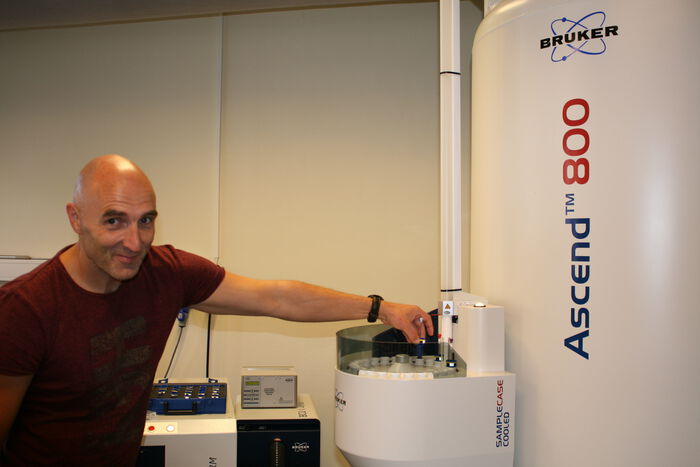
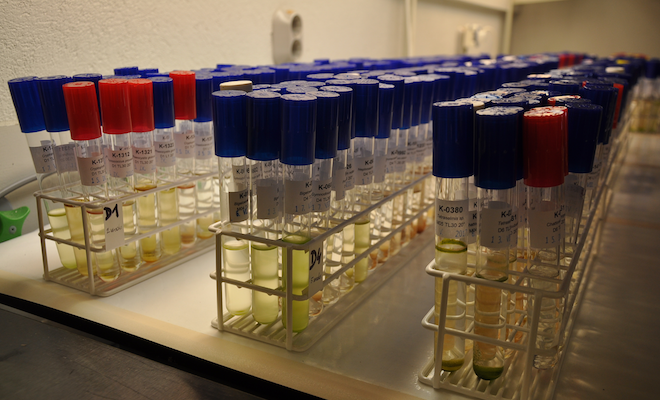
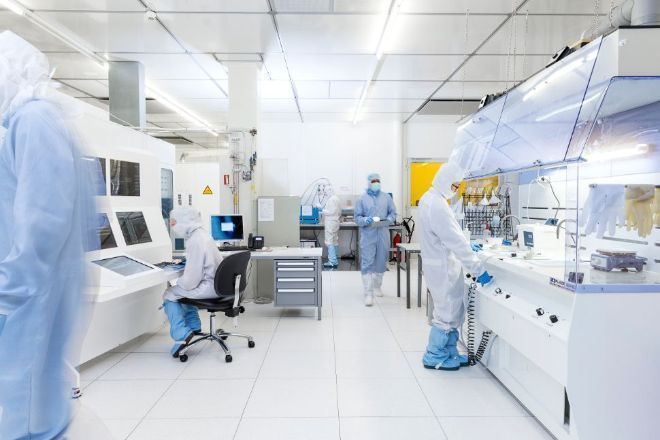
.jpg?alt=listing)

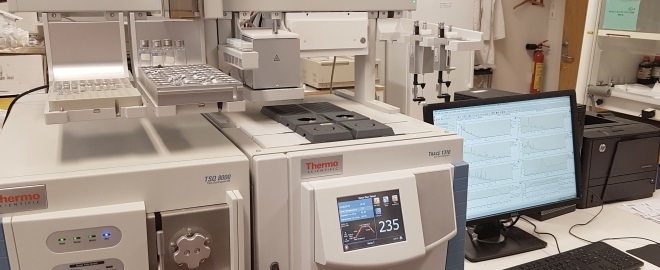
.jpg?alt=listing)










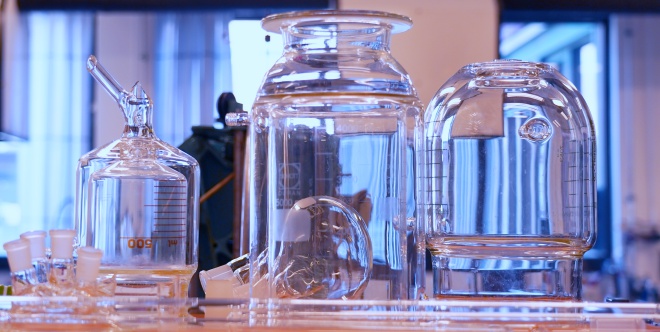
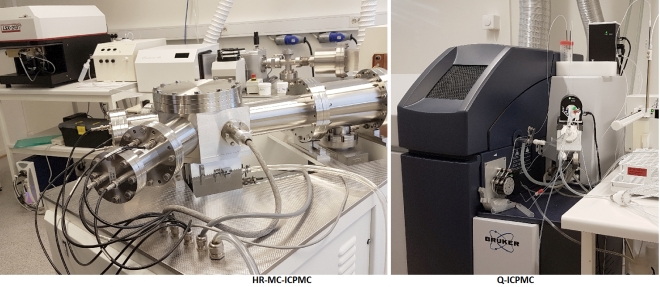


.jpg?alt=listing)




